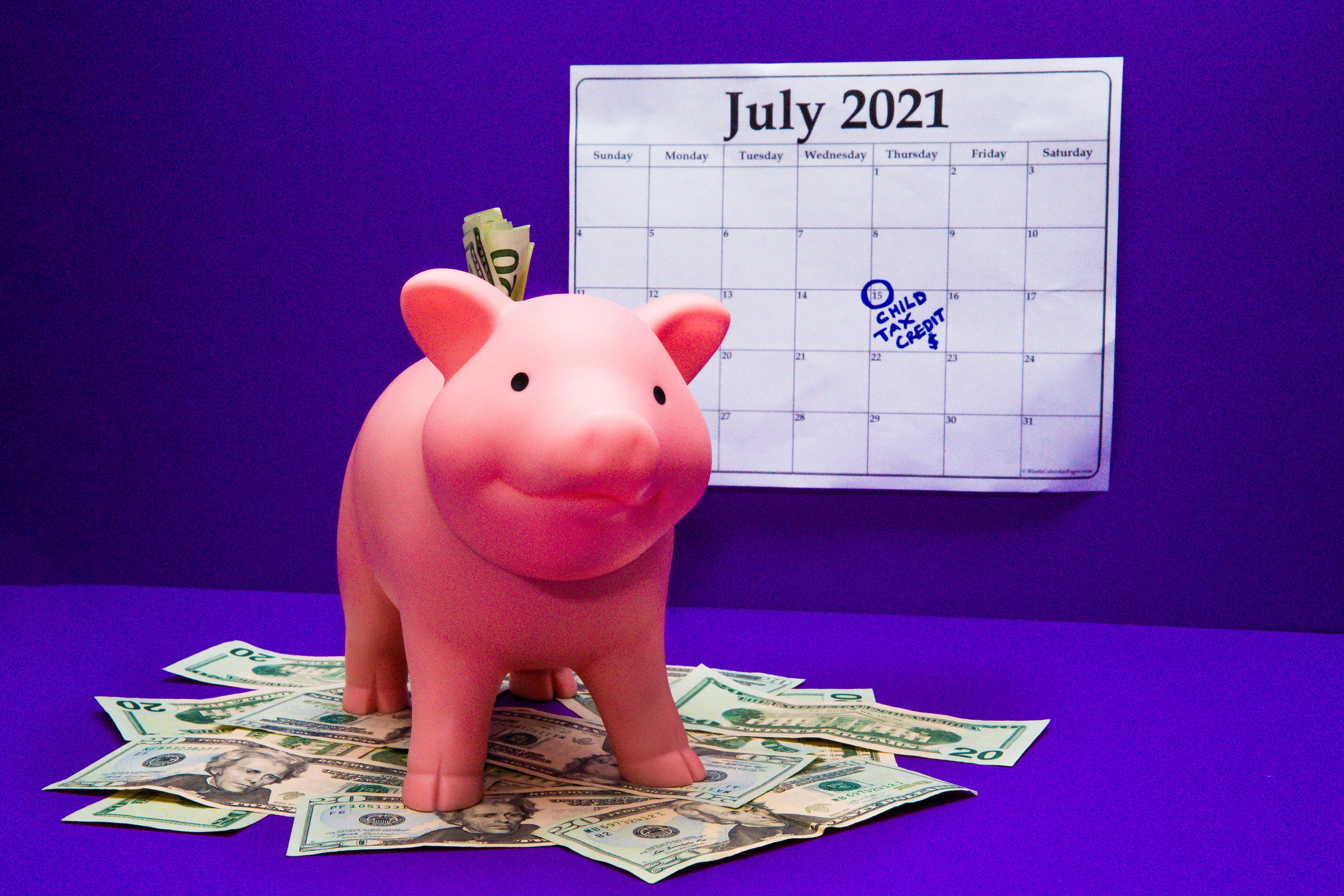
Millions of eligible parents will get up to $300 per month through December.
Sarah Tew/CNETThe countdown is on. The first child tax credit payments are only two days away. This year, eligible US families will get up to $300 a month per kid (calculate your total here) through the end of the year and more money during tax season next year. The child tax credit has long been a part of the annual tax cycle. But this time, most parents will get more money than in the past, as a result of the most recent stimulus bill from March. Previously, the child tax credit had a max amount of $2,000, but it's $3,600 this year. But how can parents track their monthly checks when sent via direct deposit and by mail this week? Will it work just like the stimulus checks?
The IRS has an online portal to help you track your check -- just like with each of the three stimulus checks and your tax refund. If you recently closed a bank account or recently moved, for example, or if your money happens to be late you can use the portal to see the payment processing date and update any information for the August payment. This portal is expected to help put your mind at ease or flag a problem with your child tax credit payment. You can also use the IRS portal to correct information and make sure you and your children are eligible.
Parents may wonder how the payment process will work starting Thursday. Will the money be electronically deposited in your bank account? What happens if the money doesn't come? Here's what you need to know before the first payment arrives this Thursday and how you'll be able to track your money. In the meantime, we suggest thinking about how to use your child tax credit money and we'll explain how to opt out using the IRS tool, if you don't think you're eligible or would rather receive one lump sum payment when you file your taxes in 2022. We have recently updated this story.
How can I track child tax credit payments online with the IRS?
The IRS said you'll be able to use the Child Tax Credit Update Portal to see your processed monthly payment history. Soon, the portal should show you whether or not you received a payment, and it'll be a good way to track payments that haven't hit your bank account yet but should have.
It's unknown right now if the portal will display other payment details, such as banking information, amount, the check's processing date or what could be causing a delay in the payment. To check on your payments online, you'll need to register with your IRS username and ID.me account information. But first-time users will need to register using a photo ID. It's one of the ways the IRS is trying to protect your information from identity theft.
If your bank has not received the deposit from the IRS, it won't have any processing information for you if you're trying to locate your check. You can use the Child Tax Credit Update Portal to double-check the information the IRS has on file. Make sure there aren't any errors, including in your account information and routing numbers. In the meantime, this payment schedule will help you keep tabs on when to expect each payment.
Child tax credit payment schedule
| Monthly | Maximum payment per child 5 and younger | Maximum payment for each child; 6 to 17 |
|---|---|---|
| July 15 | $300 | $250 |
| Aug. 13 | $300 | $250 |
| Sept. 15 | $300 | $250 |
| Oct. 15 | $300 | $250 |
| Nov. 15 | $300 | $250 |
| Dec. 15 | $300 | $250 |
| April 2022: Second half of payment | $1,800 | $1,500 |
How will child tax credit payments be sent?
You can expect to see the extra child tax credit money starting July 15. If the IRS already has your banking information from tax refunds or the stimulus checks, the money should be deposited in your bank account with no further action from you. If the IRS doesn't have your account information, you can submit it using the Child Tax Credit Update Portal.
Before Thursday, be sure to log into the portal to check the banking information the IRS has on file for you. If you didn't add your banking information in time for July's payment, look out for a mailed check -- just as you would get with mailed tax refunds. The IRS recommends using direct deposit to get your money quicker. The next deadline to add your banking information is Aug. 2.
If you need to update your mailing address for your check, you won't be able to do that using the Child Tax Credit Update Portal quite yet. The IRS plans to continue making updates this year so you'll be able to update your address, income and number of kids.
What if I don't see my child tax credit payment in my bank account?
Even though child tax credit payments are scheduled to arrive on certain dates, you may not get the money when expected for a few reasons. You may be going to receive a mailed check, or the payment may still be being processed for direct deposit. But if time has passed and you haven't received your check, see if the Processed Payments section of the Child Tax Credit Update Portal has any information. If the payment was delivered, make sure your address and banking information are correct -- especially if you've moved or changed banks.
The IRS also offers a payment trace as a way to track your money. Your check will be traceable if it has been at least five days since the deposit date and the bank hasn't received the payment. Or four weeks since the check was mailed, or six weeks if it's mailed to a forwarded address listed by the post office. If the check was mailed to a foreign address you can ask for a payment trace after nine weeks.
When to request a payment trace
| Method of payment | Time passed since IRS sent your payment |
|---|---|
| Direct deposit | 5 days |
| Check mailed to standard address | 4 weeks |
| Check mailed to a forwarded address | 6 weeks |
| Check mailed to a foreign address | 9 weeks |

It could take up to six weeks to receive your mailed child tax credit payment if it's sent to a forwarded address.
Sarah Tew/CNETCan I contact the IRS if I haven't received any money?
If you haven't received your child tax credit after a few days, you can try to contact the IRS. (We recommend waiting a few days past the payment date to see if your check will arrive in the mail.) The IRS has limited live assistance due to a continuing tax return backlog, along with sending out stimulus checks and unemployment tax refunds. You can find answers to frequently asked questions, check eligibility and see if you have a processed payment on the IRS website. Right now, the IRS doesn't have a phone number for child tax credit questions.
What if I got more or less money than I expected?
If you meet all of the child tax credit eligibility requirements but track your monthly payments online and find that you're receiving less or more money than expected, there are a few steps you can take. Start by checking your eligibility based on your most recent tax return. You can also use the IRS eligibility tool.
The IRS said that your 2019 tax return may be used to determine your eligibility. Once the IRS processes your 2020 tax return, it will automatically adjust your advance monthly payments by increasing or decreasing how much you get. If you didn't file your taxes, use the Child Tax Credit Non-filer Sign-up Tool to add your information and determine eligibility. It's unclear if the IRS will make up any differences in remaining payments or if the difference will be included in next year's tax refund
On the other hand, if you received more money than you're eligible for, you may have to repay the IRS. That's why it's important to use the Child Tax Credit Update Portal to update your information for accurate payments and eligibility. The IRS will send a letter closer to tax time next year with a personalized amount that your family qualifies for. Hold on to this letter because you'll need it when you file your 2021 income tax return if you need to return part of your payment.
What happens if I unenrolled from the payments but still got a check?
If you or your spouse unenrolled from the child tax credit program but still got the money, make sure you opted out in time. You'll need to do so at least three days before the first Thursday of each month because it takes up to seven calendar days to process the request.
Note that if you file jointly, each parent needs to unenroll. Otherwise, the spouse who doesn't opt out will receive half of the joint payment.
You can use the Child Tax Credit Update Portal to check your payments online and or to opt out of the program anytime. You'll only need to unenroll once. It's important to note that you cannot re-enroll until late September. Here are the deadlines to unenroll.
Child tax credit opt-out deadline
| Payment date | Unenrollment deadline |
|---|---|
| July 15 | June 28 |
| Aug. 13 | Aug. 2 |
| Sept. 15 | Aug. 30 |
| Oct. 15 | Oct. 4 |
| Nov. 15 | Nov. 1 |
| Dec. 15 | Nov. 29 |
We'll continue to update this story with new information and tool updates for the child tax credit program and tracking your payments. Take a look at how joint child custody will impact your child tax credit payments and calculate your monthly child tax credit payments before they arrive.
"payment" - Google News
July 13, 2021 at 10:46PM
https://ift.tt/3i59TKR
Child tax credit payments start Thursday. Here's how you track your money online - CNET
"payment" - Google News
https://ift.tt/3bV4HFe
https://ift.tt/2VYfp89
Bagikan Berita Ini















0 Response to "Child tax credit payments start Thursday. Here's how you track your money online - CNET"
Post a Comment